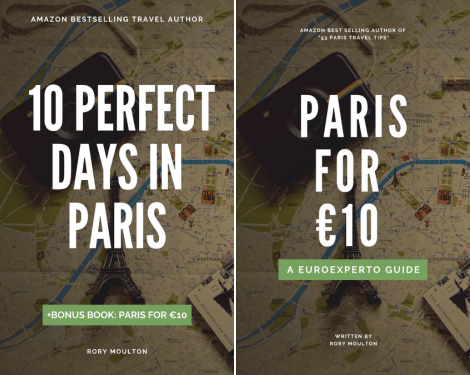It’s safe to say Rome’s Pantheon has stood the test of time…literally. Although the site’s use for religious rites dates as far back as 750 BC, we can thank Emperor Hadrian for the Pantheon we see today. Consecrated around 126 AD, Hadrian built the Pantheon in homage to the many Roman gods. Indeed, “pantheon” literally translates to “all the gods.” Thanks to bombproof construction and continual upkeep, the Pantheon is considered one of the best-preserved ancient buildings in Rome.
Get Ready for the Oculus
Circles are all around the Pantheon, but the most conspicuous circle is an opening in the center of the dome called the oculus. Not only does this perfect circular opening let in natural sunlight during the day and keep the interior cool, it also serves as a handy sundial. And there’s no glass covering the oculus. So it does get a bit wet in here during a rain shower.
See the Secret “Florentine Find” in the Pantheon
While everyone is gawking at the oculus, take a few minutes to look for a lesser-known opening in the Pantheon that played a significant role in the history of Italian architecture. And the Renaissance as a whole. When you’re inside the temple, simply turn around and look above the Pantheon’s main doors. Scan the lower third of the dome until you spot a tiny rectangular hole. Master Renaissance architect Filippo Brunelleschi cut this little opening to better understand the Pantheon’s construction. At the time, Brunelleschi was working on the dome of Florence’s Cathedral of Saint Mary of the Flower. All of Brunelleschi’s studying evidently paid off: in 1436, the Florentine “Duomo” became the first to overtake the Pantheon as the largest in the world.
LIKE FREE BOOKS? Get a free Paris ebook when you subscribe to my free, monthly email newsletter, EuroExperto. Subscribe here!
Today, neither holds the title for largest dome in the world. However, the Duomo remains the world’s largest masonry-made dome. Meanwhile, the Pantheon retains the title for largest unreinforced concrete dome.
How to Find the Pantheon
The Pantheon anchors the south end of Piazza della Rotonda. About halfway between Trevi Fountain and Campo de Fiori, the Spanish Steps, Piazza Navona and Castel Sant’Angelo are within a 15-minute walking radius. For those traveling by metro, the Barberini stop is closest.
The Pantheon is usually open Monday through Saturday from 8:30AM – 7:30PM and 9AM – 6PM on Sundays. Since there’s no entry charge, mentally prepare yourself to deal with hordes of tourists. Want a little more peace and quiet? Wake up early on a weekday and go inside right when it opens.






